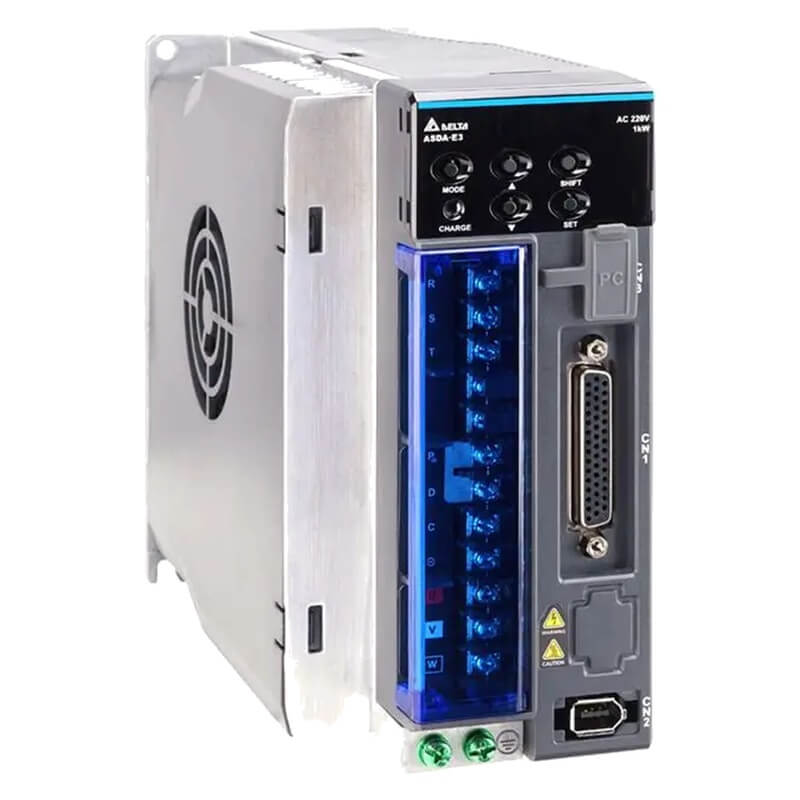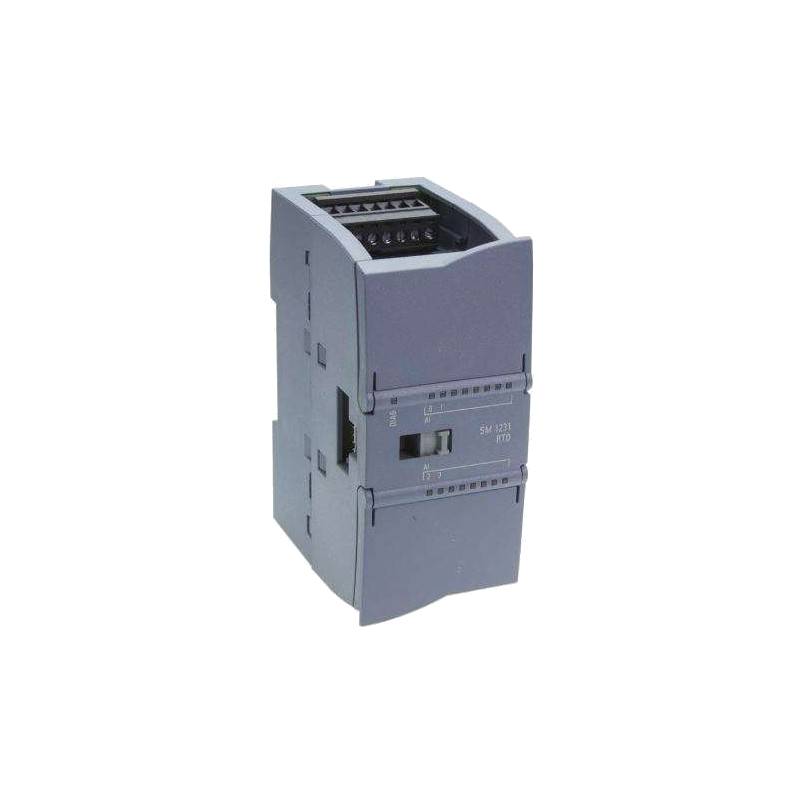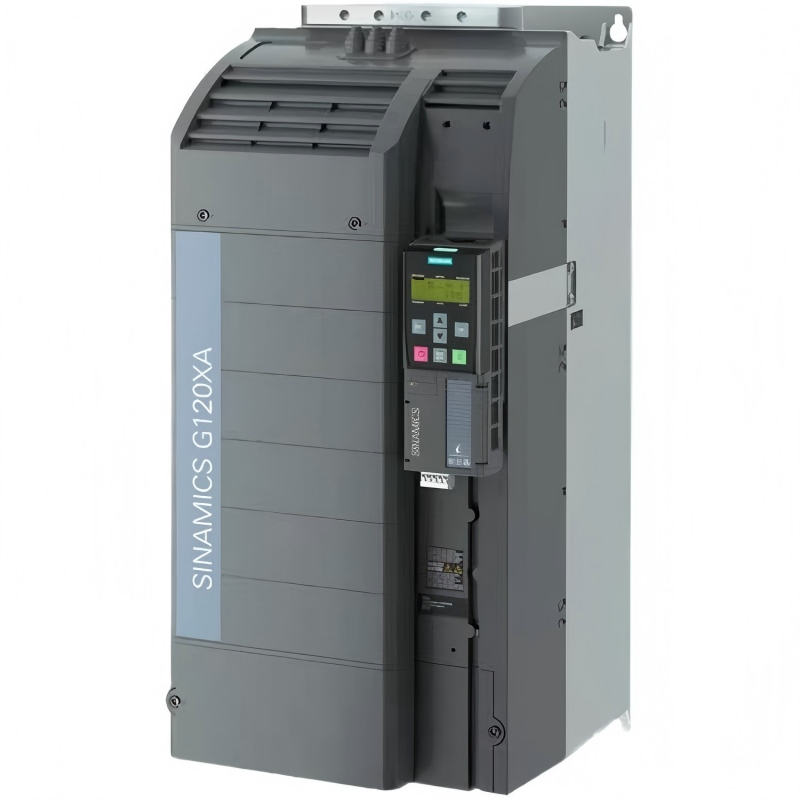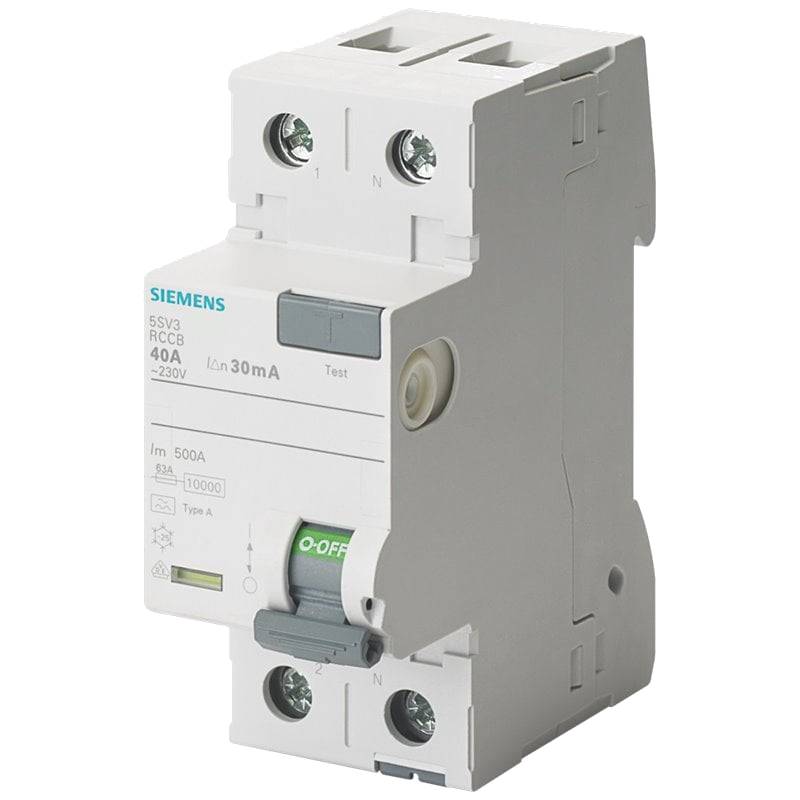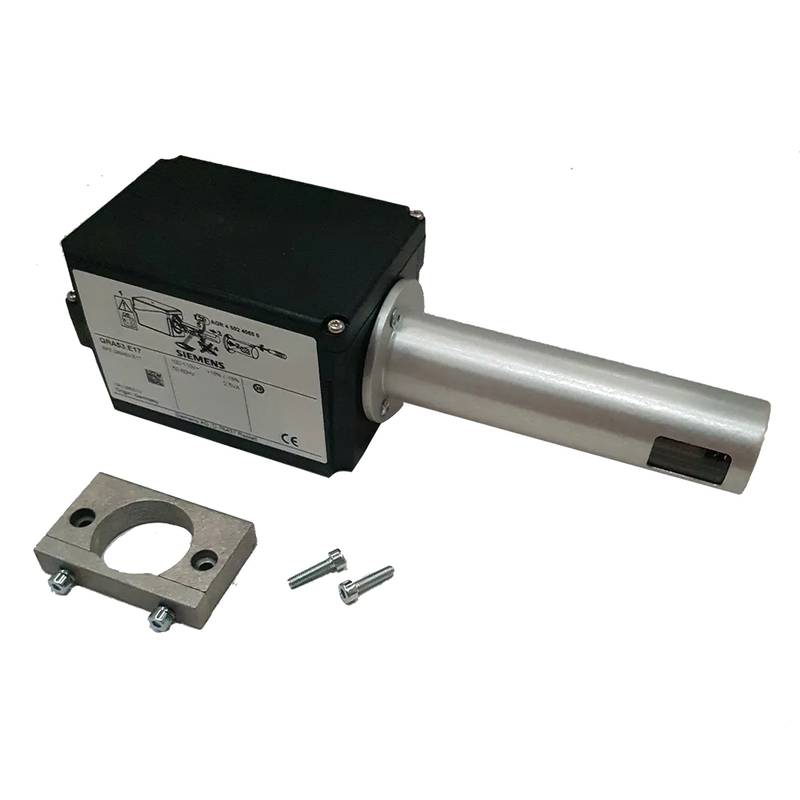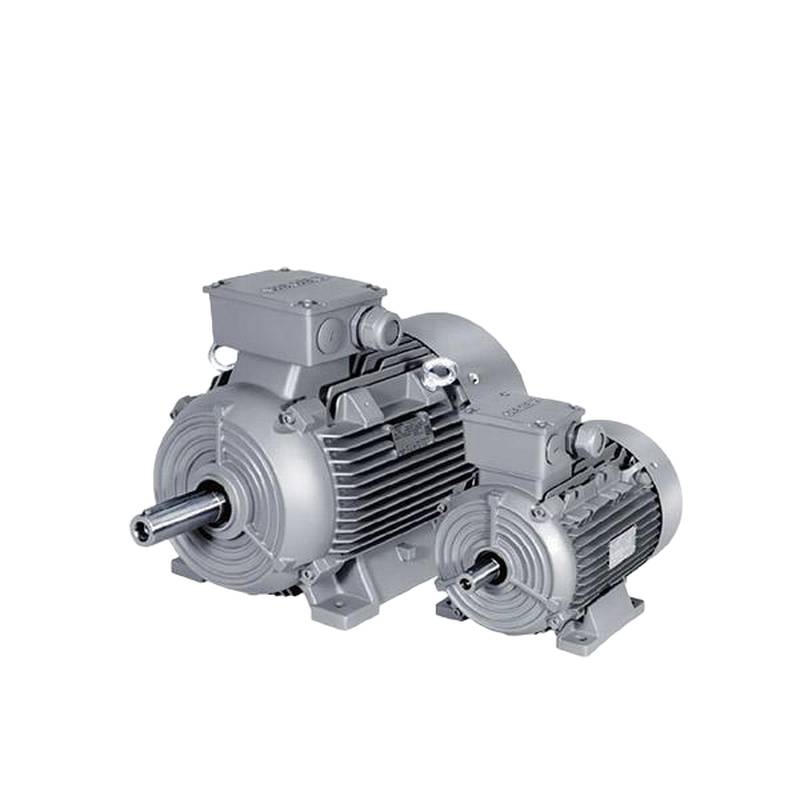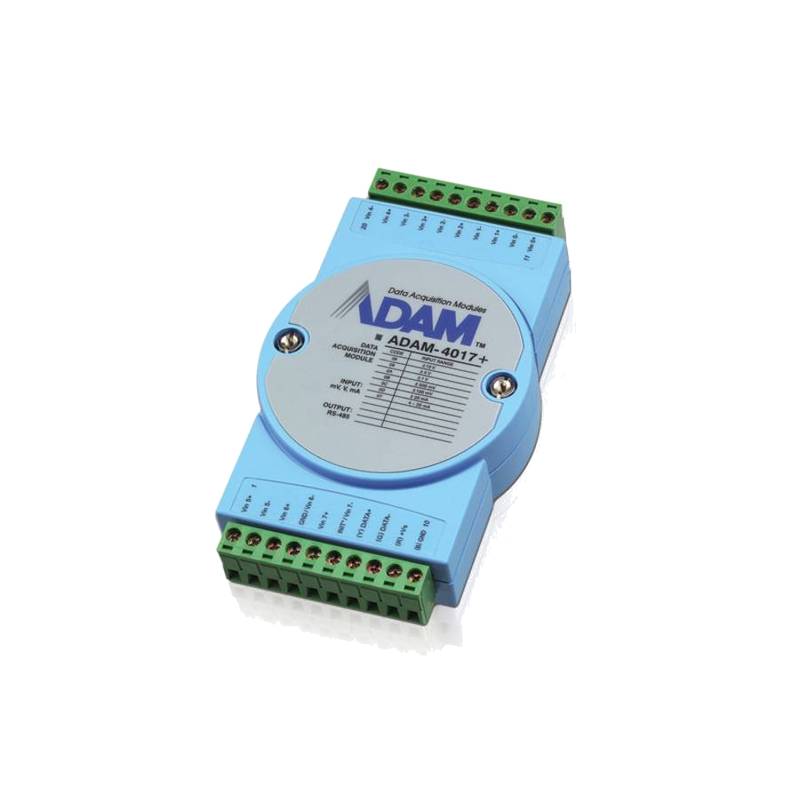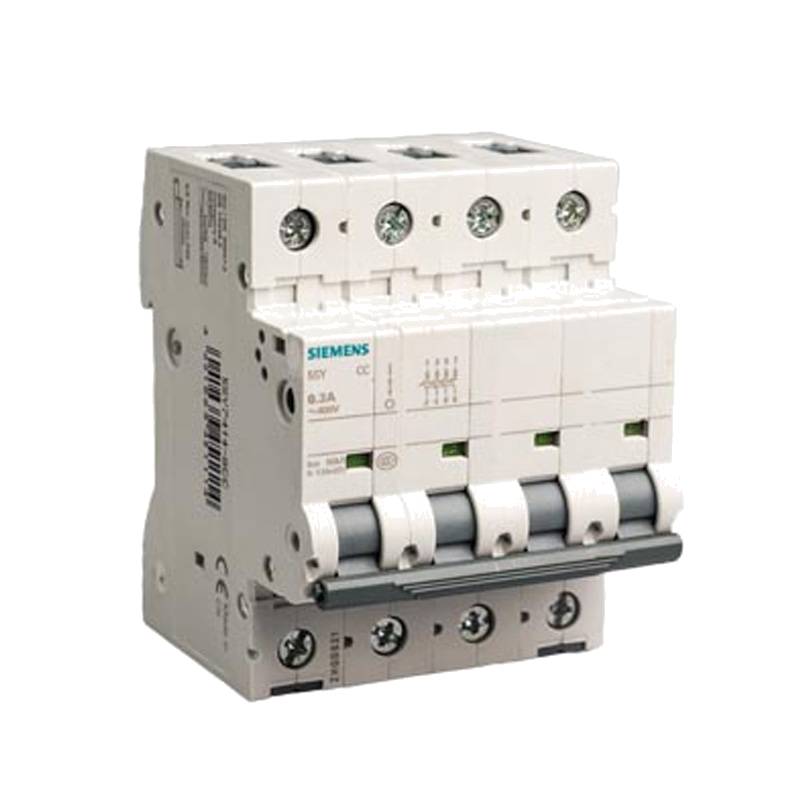
The Delta ASD-E3-1021-L is a 1kW single-phase servo drive engineered for demanding industrial applications requiring precise motion control. This robust unit excels in delivering high performance, reliability, and ease of integration. Its key advantages include exceptional torque response, advanced digital processing for superior accuracy, and a compact design suitable for space-constrained environments. Core technical specifications include a 1kW output power, single-phase input power compatibility, and a wide operating voltage range.
Delta ASD-E3-1021-L: Product Specifications
| Parameter | Value |
| :----------------- | :---------------------------------------- |
| Model | ASD3-AD3-021-L |
| Rated Output Power | 1kW |
| Input Power Phase | Single Phase |
| Input Voltage | 200-240V AC |
| Output Voltage | 200-240V AC |
| Output Current | 6A (RMS) |
| Communication | RS-485 (MODBUS) |
| Control Mode | Position, Velocity, Torque |
| Encoder Type | Incremental, Absolute (with optional module) |
| Protection | Overcurrent, Overvoltage, Overtemperature, etc. |
| Dimensions (W*H*D) | 130 x 150 x 153 mm |
Core Features & Market Positioning
The Delta ASD-E3-1021-L distinguishes itself in the competitive servo drive market through its sophisticated control algorithms and robust build quality. It leverages Delta's extensive experience in automation to provide a solution that offers precise motion control, rapid response times, and superior stability, even under fluctuating load conditions. This positioning makes it an ideal choice for applications where accuracy and repeatability are paramount. The drive's ability to support various feedback types, including optional absolute encoders, further enhances its flexibility and value proposition for high-end industrial automation. Its energy efficiency also contributes to a lower total cost of ownership.
Key Application Scenarios
This single-phase servo drive is exceptionally well-suited for a wide array of industrial automation tasks. Its precision makes it a staple in packaging machinery, where accurate positioning of components and materials is crucial for efficient production lines. In textile manufacturing, the Delta ASD-E3-1021-L enables delicate and repeatable movements required for complex weaving and embroidery processes. Furthermore, it finds significant application in material handling systems, such as automated guided vehicles (AGVs) and robotic pick-and-place operations, where smooth acceleration and deceleration are vital for safe and efficient operation. The drive's adaptability also lends itself to machine tool applications requiring fine adjustments and high-speed traverse.
Practical System Integration Guidance
Integrating the Delta ASD-E3-1021-L into an industrial control system is streamlined by its user-friendly interface and comprehensive communication options. The drive supports the MODBUS RTU protocol via its RS-485 interface, enabling seamless integration with various PLCs and HMIs. For wiring, it's essential to follow the terminal block diagrams precisely, ensuring proper grounding and connection of motor power, feedback, and control signals to prevent electrical noise and ensure operational safety. Configuration is typically performed using Delta's proprietary software, which allows for detailed parameter adjustments, including PID loop tuning, motion profiles, and limit switch settings, to optimize performance for specific machinery. Users should consult the official Delta ASD-E-003 manual for detailed wiring schematics and software setup procedures.
Operation and Risk Mitigation
Safe and effective operation of the Delta ASD-E3-1021-L necessitates adherence to established safety protocols and an understanding of its operational parameters. Before powering on, verify all connections are secure and correct to prevent short circuits or component damage. During operation, monitor motor temperature and drive status indicators to anticipate potential issues. Common fault codes, such as overcurrent (often indicated by code F01) or overvoltage (F03), typically signal issues with motor load, cabling, or the power supply, requiring prompt investigation and resolution. The drive incorporates robust internal protection mechanisms, but external safeguarding measures like emergency stop circuits and appropriate fuses are critical for personnel safety and equipment protection. Always refer to the user manual for a complete list of fault codes and recommended troubleshooting steps.
Scalability & Long-Term Value
The Delta ASD-E3-1021-L offers significant long-term value through its inherent scalability and compatibility with evolving automation technologies. While this specific model is designed for single-phase input, Delta's broader E3 series ecosystem allows for seamless integration with other Delta products, enabling system expansion and upgrades. The drive's support for common industrial communication protocols like MODBUS facilitates its integration into larger, more complex distributed control architectures. Furthermore, as industries move towards Industry 4.0 and the Industrial Internet of Things (IIoT), the data-rich nature of modern servo drives like the ASD-E3-1021-L allows for enhanced diagnostics, predictive maintenance, and performance optimization when connected to supervisory systems, ensuring continued relevance and efficiency over the lifespan of industrial equipment.
Frequently Asked Questions (FAQs)
What are the primary advantages of the Delta ASD-E3-1021-L servo drive?
This servo drive offers high precision and rapid response, crucial for accurate automation tasks. It boasts excellent torque control, ensuring consistent performance under varying loads. Its compact design also facilitates integration into diverse machinery footprints.
The ASD-E3-1021-L features advanced digital signal processing for enhanced stability and repeatability. Its energy-efficient operation contributes to reduced operational costs over time.
The drive's flexible communication capabilities, including RS-485 MODBUS, simplify integration with existing control systems. It also supports multiple encoder types for diverse feedback needs.
How do I wire the Delta ASD-E3-1021-L servo drive for a single-phase motor?
Ensure the power supply is disconnected before beginning any wiring procedures. Connect the single-phase AC input power to the designated L and N terminals on the drive.
Motor power leads (U, V, W) must be connected to the corresponding motor terminals on the drive. Also, connect the motor's grounding wire securely to the drive's ground terminal.
Connect the feedback signals from the motor's encoder to the appropriate input terminals on the drive, following the specific encoder type's wiring diagram. Refer to the manual for precise pinouts.
What are common troubleshooting steps for Delta ASD-E3-1021-L fault codes?
When an overcurrent fault (e.g., F01) occurs, first inspect the motor and cabling for any shorts or damage. Reduce the acceleration/deceleration rates or the commanded torque.
For overvoltage faults (e.g., F03), check the input power supply for fluctuations. Ensure the regenerative resistor, if used, is correctly connected and rated appropriately.
If a motor encoder fault is indicated, verify the feedback cable connection and integrity. Check encoder signal levels and ensure the correct encoder type is selected in the drive's parameters.
Can the Delta ASD-E3-1021-L be used with absolute encoders?
Yes, the Delta ASD-E3-1021-L can support absolute encoders, but typically requires an optional communication or encoder module. Check the drive's specifications for compatibility with specific absolute encoder interfaces.
The use of an absolute encoder eliminates the need for homing routines upon startup, improving machine startup efficiency. It provides position feedback even when power is lost.
When configuring for absolute encoders, ensure the correct module is installed and the drive parameters are set to match the encoder's protocol and resolution. Consult the manual for module installation.
What communication protocols does the Delta ASD-E3-1021-L support for system integration?
The Delta ASD-E3-1021-L primarily supports the RS-485 communication interface. This interface commonly utilizes the MODBUS RTU protocol for data exchange.
This allows for easy integration with a wide range of Programmable Logic Controllers (PLCs), Human-Machine Interfaces (HMIs), and other industrial automation devices. It enables remote monitoring and control.
Configuration and parameter setting can often be managed remotely via these communication protocols, streamlining system setup and diagnostics for industrial equipment.
What are the key technical specifications to consider when selecting this servo drive?
Consider the rated output power of 1kW, which dictates the motor size and torque capability it can drive. Ensure your motor's power requirements align with this specification.
The single-phase input power requirement is critical for matching the drive to your available power infrastructure. Verify the input voltage range (200-240V AC) is suitable.
Pay attention to the output current rating (6A RMS), ensuring it exceeds the motor's continuous current draw. Also, review communication options and supported encoder types for system compatibility.
What types of industrial equipment benefit most from the Delta ASD-E3-1021-L?
Packaging machinery, where precise and repeatable movements are essential for efficient production, is a prime application. High-speed printing and labeling machines also benefit greatly.
Textile machinery requiring delicate thread control and complex pattern execution can leverage the drive's accuracy. Similarly, material handling systems benefit from smooth acceleration and precise positioning.
Machine tools, robotics, and automated assembly lines are excellent candidates due to the need for high-accuracy motion control and rapid dynamic response in these operations.
How can I optimize the performance of the Delta ASD-E3-1021-L for my specific application?
Proper tuning of the drive's PID control loops is essential for achieving optimal performance and stability. This minimizes overshoot and settling time for accurate positioning.
Adjusting acceleration and deceleration rates to match the inertia of the load and the mechanical constraints of the equipment can improve smoothness and reduce stress on components.
Select the appropriate servo motor and feedback device that are compatible with the drive and suited for the application's speed, torque, and accuracy requirements.
What safety precautions should be taken when installing and operating the Delta ASD-E3-1021-L?
Always ensure the main power supply to the drive is switched off and locked out before performing any wiring or maintenance. Verify that all connections are secure and properly insulated.
Install appropriate overcurrent protection devices, such as fuses or circuit breakers, on the input power line as specified in the user manual. Use proper grounding techniques to prevent electrical hazards.
Implement emergency stop functions within the machine control system to quickly de-energize the drive and motor in hazardous situations. Familiarize yourself with the drive's internal protection features and fault codes.
Does Delta offer software for configuring and monitoring the ASD-E3-1021-L?
Yes, Delta typically provides dedicated software, such as Delta's Motion Studio or specific drive configuration tools, for the ASD-E3 series. This software allows for comprehensive parameter setup.
Through this software, users can configure control modes, motion profiles, I/O assignments, and encoder settings. It also enables real-time monitoring of drive status and motor feedback data.
Additionally, this software often includes tools for diagnostics, troubleshooting, and firmware updates, simplifying the maintenance and optimization of the servo drive system.














